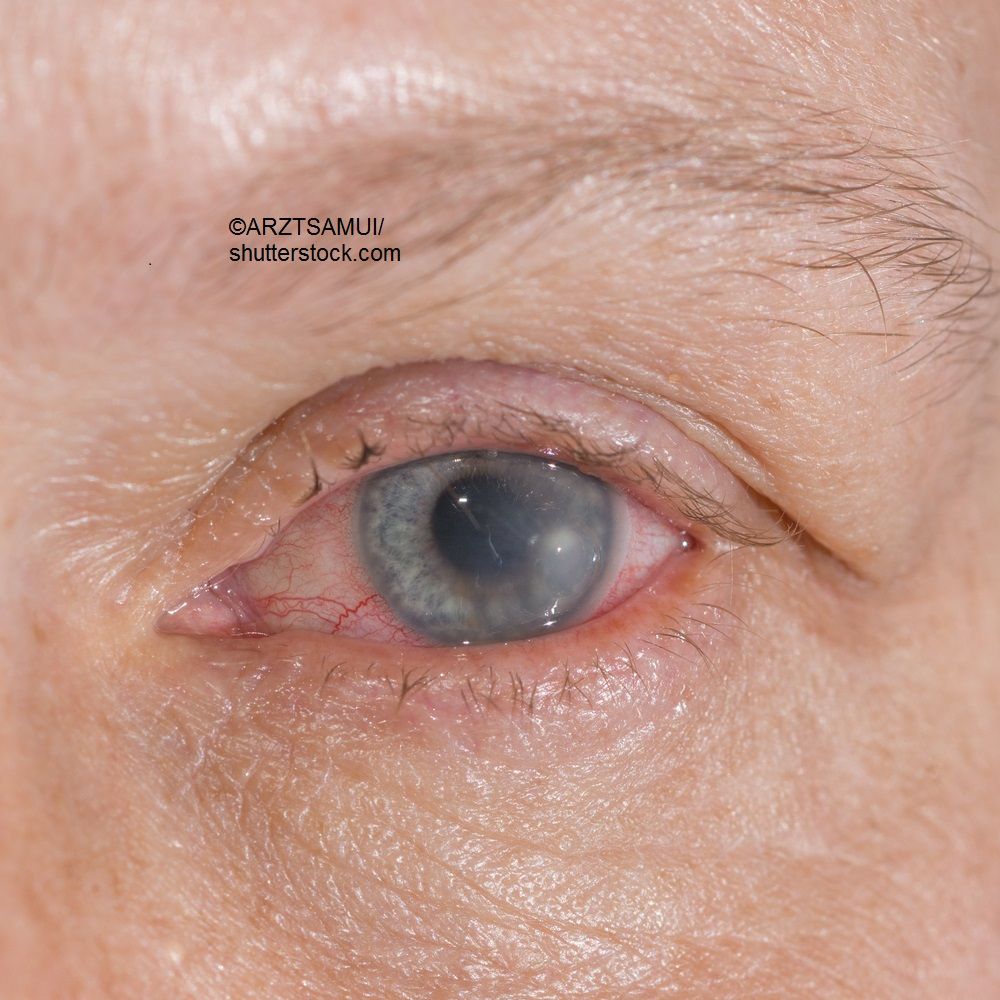CDC: One in 100 Contact Lens Wearers Follows All Directions
It's no wonder contact lenses are associated with infections. Just about everyone who wears them engages in "risky behavior' involving improper care and handling.
©ARZTSAMUI/shutterstock.com

Virtually everyone who wears contact lenses ignores at least one recommendation for their lenses' proper care and handling, CDC researchers reported Thursday.
Survey data analyzed by Jennifer R. Cope, MD, and colleagues indicated that 99% of contact lens-wearing respondents acknowledged at least one incident of "risky behavior" known to promote eye infections. These included reusing cleaning solutions meant for one-time use, rinsing lenses in tap water, and sleeping with their lenses in.
One-third of respondents reported a healthcare visit for red or painful eyes, according to the CDC's online survey, published in Mortality and Morbidity Weekly Report.
A large portion of contact lens wearers reported exposing their lenses to some kind of water. Some 85% of participants said they showered while wearing contact lenses and 61% said they swam. Almost all (91%) rigid lens wearers and 33% of the overall sample reported rinsing their lenses in tap water.
Many users also reported napping (87.1%) and sleeping overnight (51.0%) while wearing contact lenses. Improper use of cleaning solution was an issue, with 55.1% reporting they added new disinfecting solution to existing solution instead of emptying and cleaning the cases. Participants also kept cases (82.3%) and lenses (49.9%) longer than the recommended replacement intervals.
John Clements, MD, assistant professor, ophthalmology at Oregon Health & Science University in Portland told MedPage Today there are one million healthcare visits annually for complications related to contact lens use, many of which are infections.
"It's a well established fact that ophthalmologists have known since the establishment of the soft contact lens that there's an association with infections," he said. "The impact for clinicians is we want the best for our patients and if this study can disseminate the information about how to properly wear contacts and decrease the rates of infection, that's a really good thing."
In fact, Cope and colleagues noted there have been several multistate outbreaks of eye infections, including Acanthamoeba keratitis, with healthcare visits for keratitis costing $175 million annually.
The authors administered the Contact Lens Risk Survey to a convenience sample of approximately 1,000 contact lens-wearing participants online. Demographics of the study were 82% female and 62% were aged ≥40 years. The authors estimate that nearly 40.9 million Americans overall wear contact lenses.
Limitations include lack of representation for contact lens wearers <18 years, thus excluding contact lens wearers most at risk for complications. In addition, the survey participants were more likely to be older and female compared to the general contact-lens wearing population.
This article was first published on MedPage Today and reprinted with permission. Free registration is required.